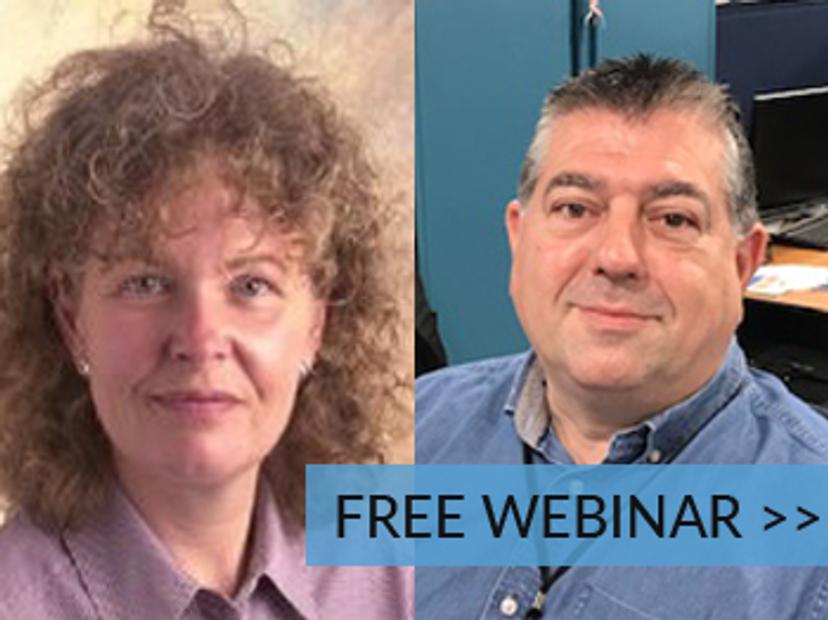Operating SEM-EDS in a regulated environment: Your questions answered
Watch this on-demand webinar to ensure compliance, increase productivity and improve the quality of results in pharma applications of SEM-EDS
13 Aug 2020
The pharmaceutical industry is one of the most regulated industries in the world. But, until very recently, analytical techniques such as SEM-EDS were exempt from these regulations due to the non-routine nature of SEM analysis. This has now changed with the introduction of good practice quality guidelines such as ‘GxP’, and regulations such as 21 CFR part 11 and Annex 11. These guidelines and regulations are designed to ensure that electronic records are secure, trustworthy and reliable.
In this on-demand SelectScience® webinar, Anthony Hyde, from Oxford instruments, and Jill Webb, Associate Principal Scientist at RSSL, highlight some of the common applications carried out by SEM-EDS users in pharmaceutical facilities.
Learn how SEM-EDS users must work closely with IT and quality managers to generate and implement standard operating procedures (SOP) to ensure that any analysis carried out in their laboratories conforms with regulations such as 21 CFR part 11 and Annex 11.
The speakers also demonstrate how the AZtecPharma SEM-EDS system not only allows EDS analysis to easily be incorporated into SOPs, but also enables users to improve their productivity and the quality of their results with:
- Individual user logins
- Digital signatures
- Data audit trails
- Tru-Q
- Live chemical imaging
Read on for highlights from the Q&A discussion at the end of the live webinar or register to watch the full webinar on demand >>
Register NowQ: We have an SEM that is used for both regulated and non-regulated work. Can I have two types of EDS software on it?
AH: Yes. AZtec Pharma is a separate program to the normal AZtec, and it has its own DVD, so it can be installed alongside an existing AZtec installation.
Q: You said that data cannot be deleted from the data tree, but can I change names?
AH: Yes. You can change the name to the data tree, but the audit trail records the old name and the new name. If you look in the audit trail, it'll tell you when that happened and who did it, so that we always know what's happened with those name changes, because it's so easy to either misspell names, or you haven't put a name in, and we've put a default name in. So you need to be able to go in there and type in names.
Q: I have an AZtec system with EDS and EBSD detectors on it. Can I add AZtec Pharma to the system? And will I still be able to use my EBSD system?
AH: Yes, you can add AZtec Pharma, because it's a separate installer. Because it's a separate install, it has nothing to do with the existing install. So, you can carry on using whatever the configuration is, whether it's EBSD or EDS, from a different package. There are no problems there. Whenever you want to run up AZtec Pharma, you'll be able to do that, and they will be two separate entities.
Q: How many records can be stored in the audit trail?
AH: I think we looked into this, because we've gone for a particular database from Microsoft, and it quotes in excess of 12 billion records.
Q: Does RSSL treat its non-pharmaceutical data differently?
JW: No, it doesn't. It's all acquired and saved in the same way and backed up in the same way. It's just that the pharmaceutical data goes through extra layers of auditing.
Q: Would I be able to load my old AZtec projects into AZtec Pharma?
AH: No. We wanted to make sure that you have secure data. So, for instance, if you had an old AZtec project and loaded it into AZtec Pharma, AZtec Pharma would have no knowledge or record of that project and who acquired it. We make sure that if you have, for instance, an AZtec system, and an AZtec Pharma system, then you wouldn't be able to load a project from either program into each other. So, they're both isolated with regard to that.
Q: Can more than one analyst work on the same project?
AH: Yes. We don't put any restrictions on who can log in and open up a project. But what we do is record who has acquired data, so you could have an audit trail that records several different users acquiring data into the one project.
Q: Do you record where the projects are saved in the audit trail?
AH: Yes at the point of creation. So, we force people, when they log in, to create a project and a location for that, and that is recorded in the audit trail.
Watch this on-demand webinar here>>
SelectScience runs 3-4 webinars a month across various scientific topics, discover more of our upcoming webinars>>
